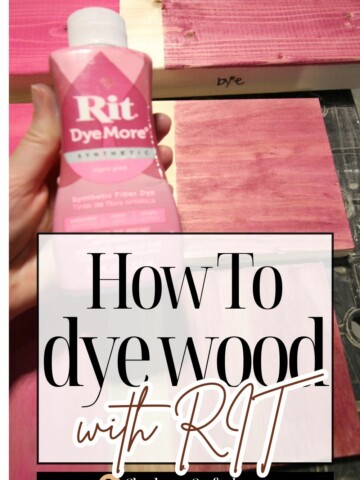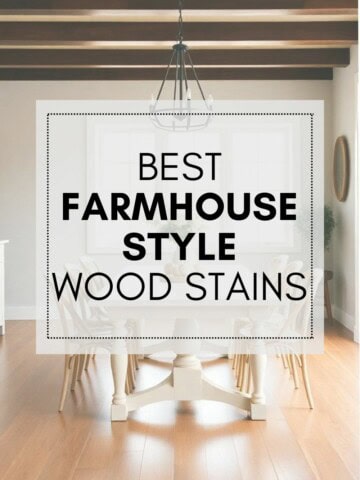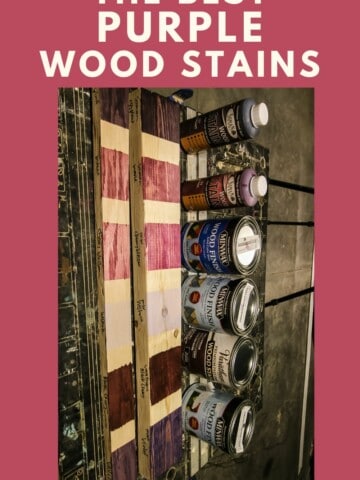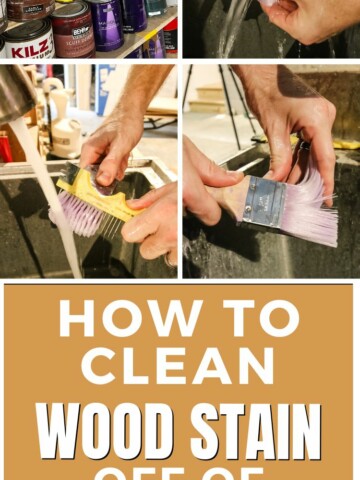Want to use wood stain to totally transform the look of your wood? Here's how to stain pine to look like oak!
Pine is a super popular wood for beginner woodworkers to try building with. This is because it is readily available and relatively inexpensive.
It's also a common wood to find when you purchase vintage furniture to refinish.
While pine is common, it's not always the favorite aesthetic. Pine generally has a very light color to it with dark brown knots.
If you want your pine to look more like oak, you can achieve a similar look with wood stain.
However, it's important to understand that you're never going to make pine look like actual oak boards.
Oak is a hardwood with a totally different grain pattern than pine.
If your pine has a lot of dark knots, it's gonna be really hard to cover up with a golden wood stain. If your goal is to cover up the knots, consider staining your pine to look like walnut instead.
While you cannot make pine boards look deceivingly like oak, you can give them the oak aesthetic with stain. Here's how to do it.
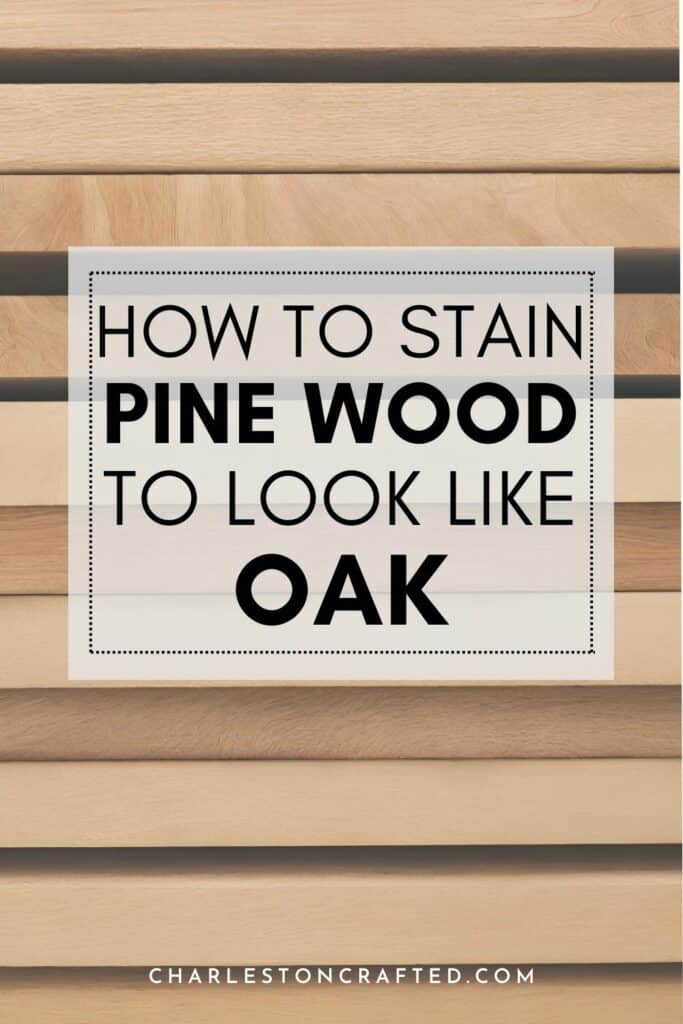
Choosing the Right Stain
The most important part of this process will be choosing the right wood stain color. You can look at samples online (be sure to check out our test of the best warm toned wood stains!)
But, in reality you need to test your stain you your actual wood. Even 2 boards of the same species can absorb stain differently due to differences in age, dryness, and coloration.
If you have built your project, you've got it easy. Grab a scrap cut off and test stains there.
But, if it's a furniture makeover or floors - you just have to pick a discrete spot to test on and sand it off later.
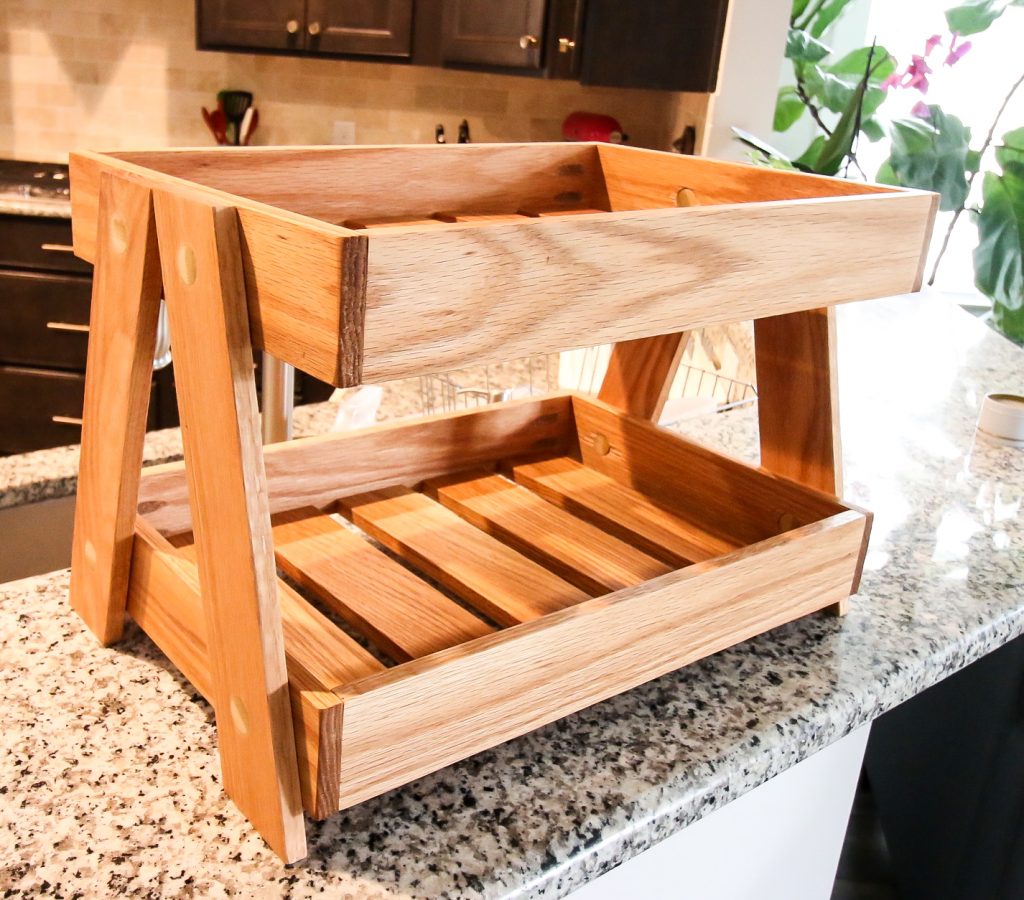
Layering stains
Sometimes, especially if you are trying to match another piece of wood, it's best to layer 2 different stains to get the exact color you are going for.
Because pine is light and oak is a bit warmer and darker, it can be a good option and it's easier than using just one stain for pine.
This can get a bit complicated. Always test and practice on scrap wood.
What color is oak?
Oak comes in golden and red varieties. They are light to mid-toned shades, always with warm undertones - shades of beige, yellow, brown, and red.
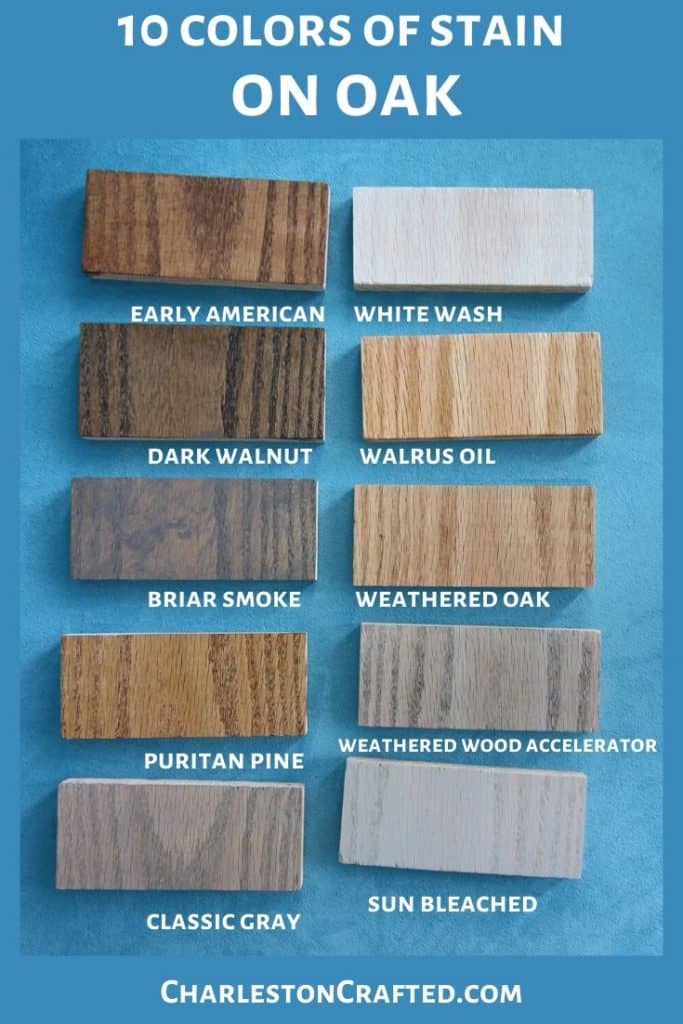
The Best Oak Wood Stains
Here are some of the most popular oak colored wood stains and dyes.
- Minwax Golden Oak
- Varathane Golden Oak
- Golden Oak Restor-A-Finish
- Varathane Golden Pecan
- Varathane Spring Oak
- Tried & True Stain + Finish - Golden Oak
- General Finishes - Antique Oak
- Furniture Clinic Wood Stain - Natural Oak
Beware "Weathered Oak" stains which tend to be more gray - emphasis on "weathered" - than warm toned. Steer clear for this project!
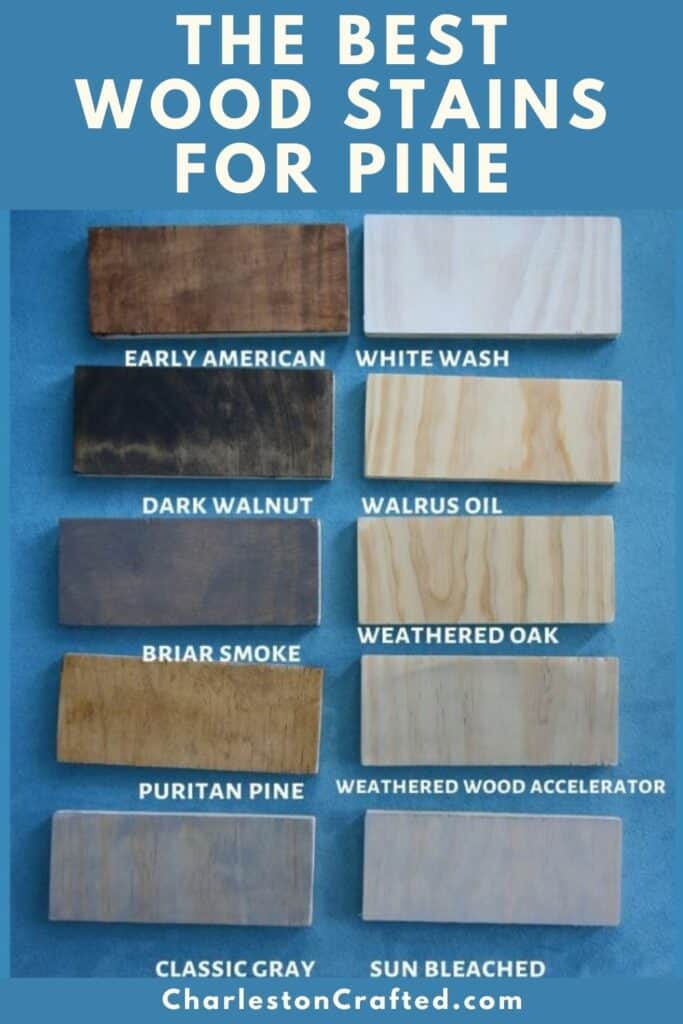
How to stain pine to look like oak
Here's how easy it is to give inexpensive pine the look of oak wood using stain.
Supplies needed:
- Pine wood
- Sand paper - 80, 150, and 220 grit + sander
- Soft cloth or rag
- Wood conditioner
- Paint brush
- Oak colored wood stain
- Lint-free cloth or brush to apply stain
- Matte topcoat + brush to apply
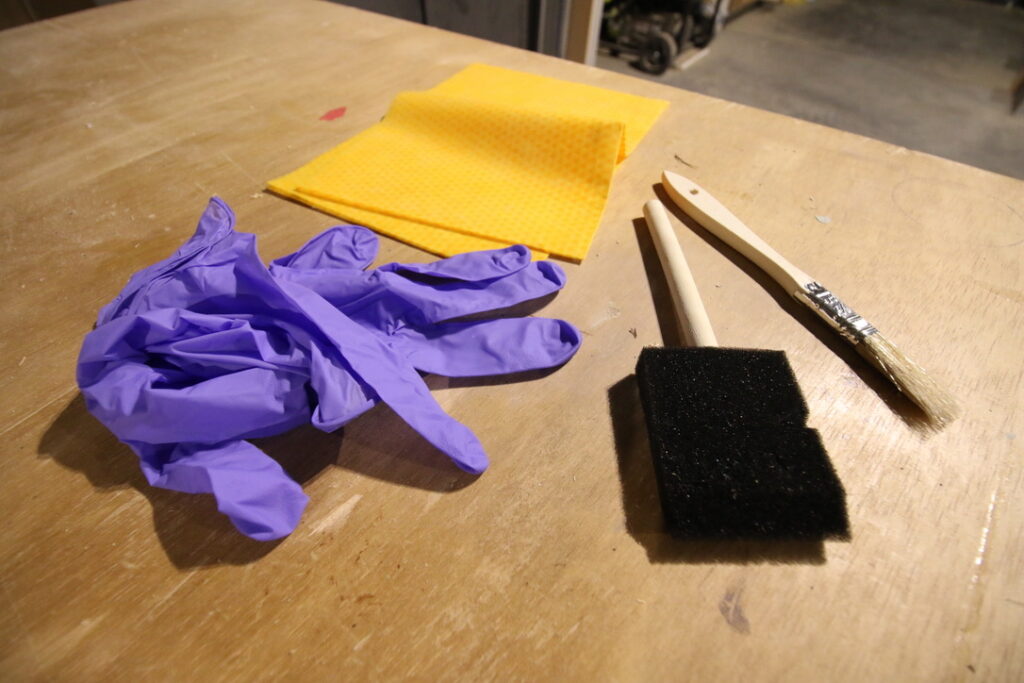
Steps to stain pine to look like oak:
STEP 1: Sand
Pine is a super soft wood that doesn't always accept stain evenly. So, you will want to prep it well for the best possible results.
If there is damage to your wood, you will want to use wood filler to fix it before sanding.
Then, you can sand the wood smooth. If the surface is rough, start with an 80 grit sand paper. Sand in the direction of the wood grain, up and down the board. This will help with any large rough spots.
Then, follow up with a sand paper in the 100s. Some people will do a round of sanding with each 120 and then 150-180 grit. Honestly, we usually use just 1 round of the 100s.
Finally, finish off with a 220 grit sandpaper. This will make the wood surface super smooth and almost soft to the touch.
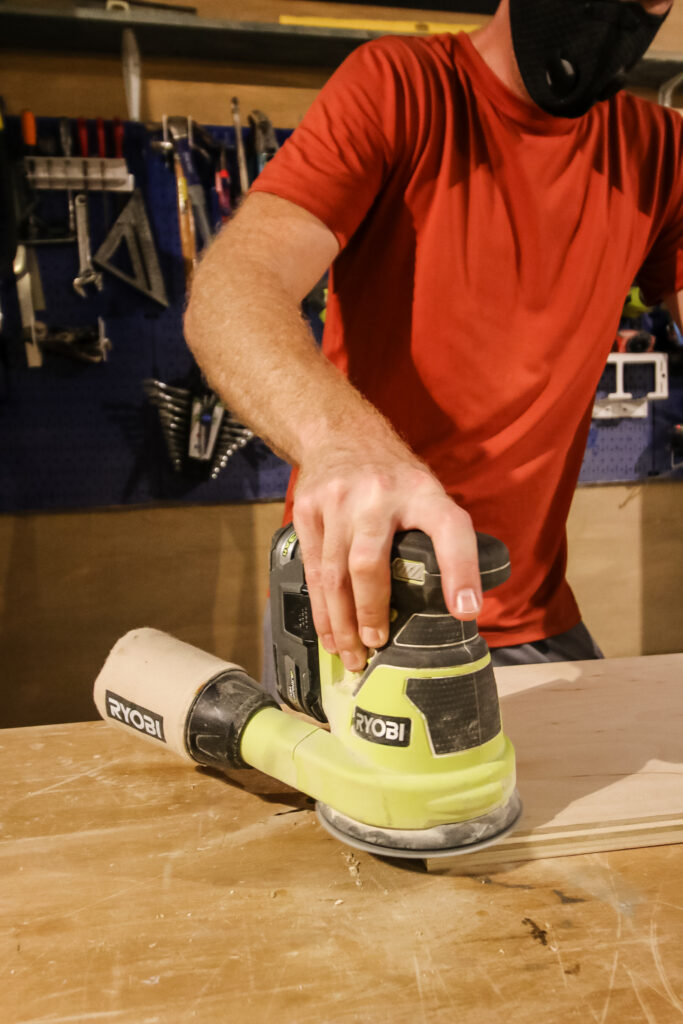
STEP 2: Clean the wood
It's important to wipe down your wood really well after sanding, before applying stain. Otherwise, you are basically painting the dirt in place, making it very hard to get off later.
Wipe your boards down with a clean, soft cloth. If it is very dirty, you can use a slightly damp cloth. Know that water may raise the grain, making it bumpy and need another round of 220 grit sanding again.
I know it's annoying, but take your time and do a good job.
STEP 3: Apply wood conditioner
Wood conditioner is like a lotion for your wood, evening out the moisture level of the wood itself so that it absorbs stain evenly.
Without wood conditioner, dry spots in the wood will absorb more stain, leading to darker areas. This is the top cause of splotchy wood finishes.
If you want a really nice, smooth finish, use wood conditioner. It's less important when using a light stain like golden oak, but still important for a quality finish.
Follow the instructions on your can, but typically you brush the conditioner on and let it dry. You will then want to apply stain within 24 hours.
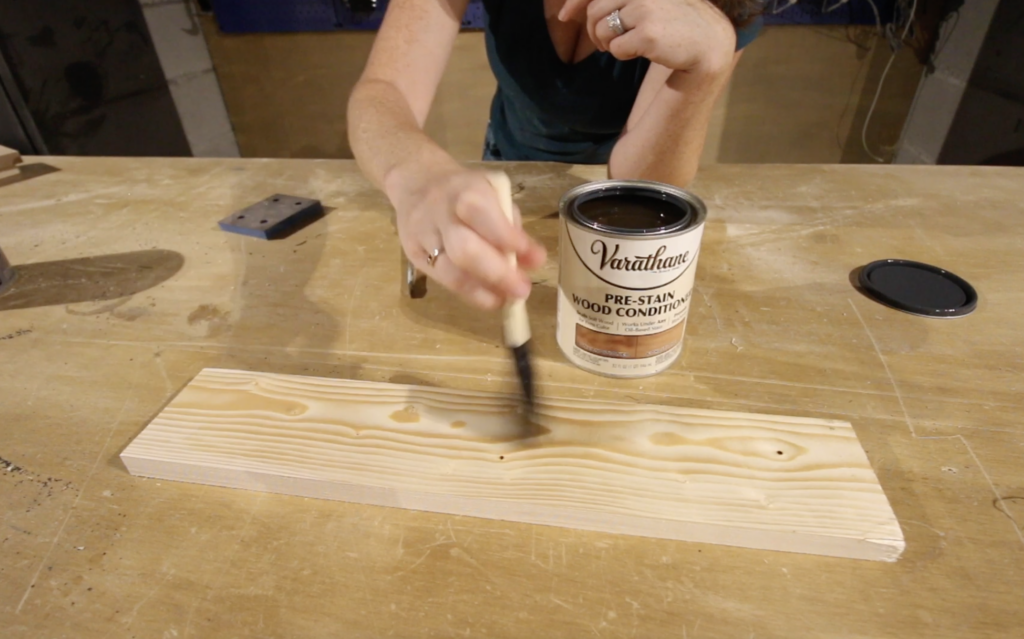
STEP 4: Apply stain
Finally, it's time to stain your wood!
Stir the stain well, because the colored pigment can settle in the bottom of the can. Don't shake stain - it can cause bubbles that transfer to the wood. Stir and scrape the bottom of the can as you do.
Dip your brush or cloth into the can and spread the stain onto the wood in the direction of the grain (up and down the board).
Work in small sections, being sure to not leave any pooling or drips, which will leave dark blotches.
Once you have finished each face or area of the board, go back with a clean cloth and wipe off any excess stain.
Let dry.
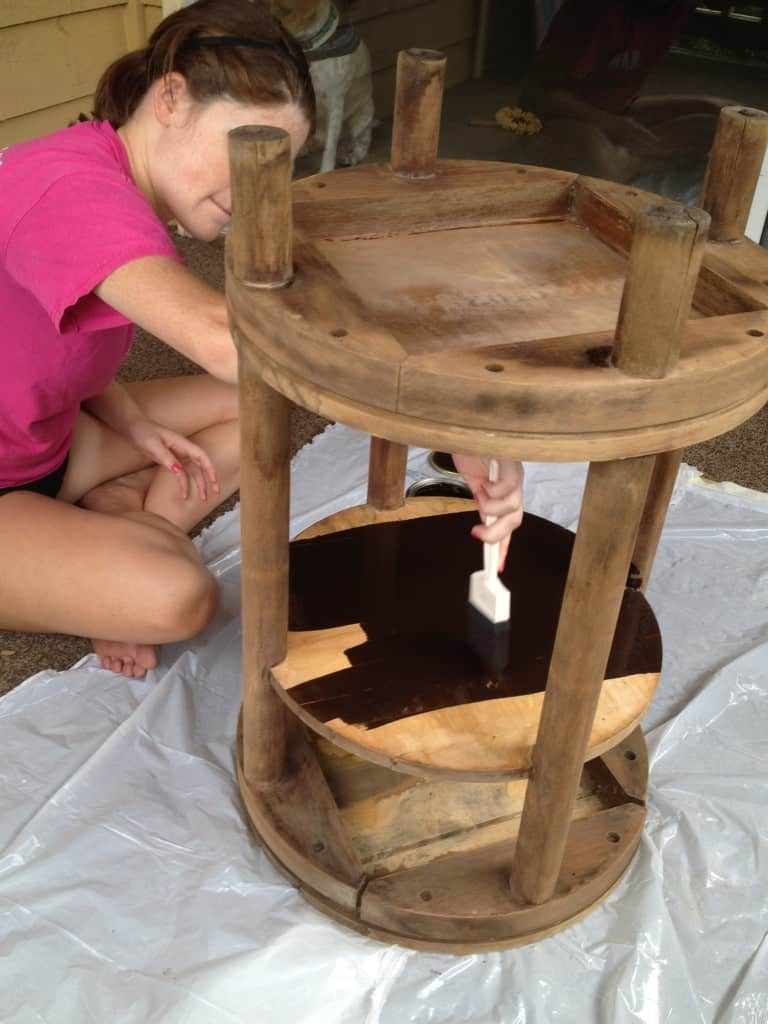
STEP 5: Optional - apply a second coat
Examine your wood - are you happy with the darkness and color?
If you want it to be darker, you can repeat the above process (step 4) to add a second coat of stain.
Let dry completely.
STEP 6: Apply a top coat
Always finish your project with a topcoat. I always recommend a matte or flat finish. But, a glossier finish can work for oak - it just depends on the final aesthetic you are going for!
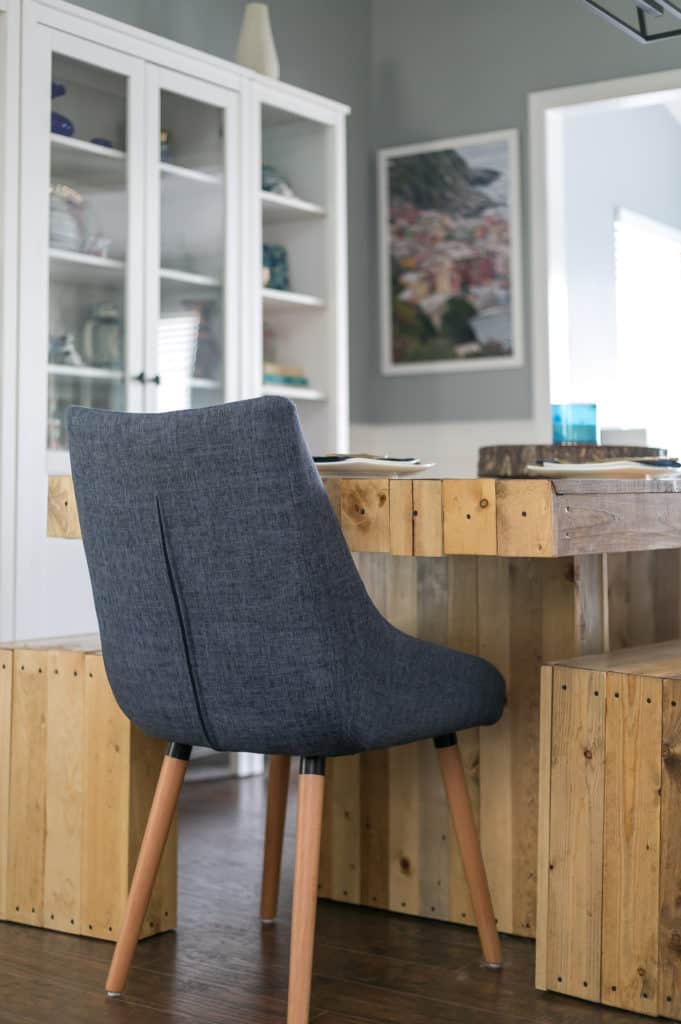
Here are our favorite matte topcoats:
- Varathane Polyurethane (matte)
- General Finishes Flat Out Flat Topcoat
- Venier Matte Clear Finish
- Rust-Oleum Clear Chalked (Ultra Matte)
- Rust-Oleum Ultimate Polyurethane (Matte)
Follow the instructions on your can of sealant, but typically you want to apply in the direction of the grain with a brush.
Let dry and repeat for additional coats.
We typically do 2 coats of topcoat, but if something will get a lot of wear and tear (such as a tabletop) I have done as many as 4 coats.
With this process, you can easily and inexpensively give your pine wood the higher end pine!
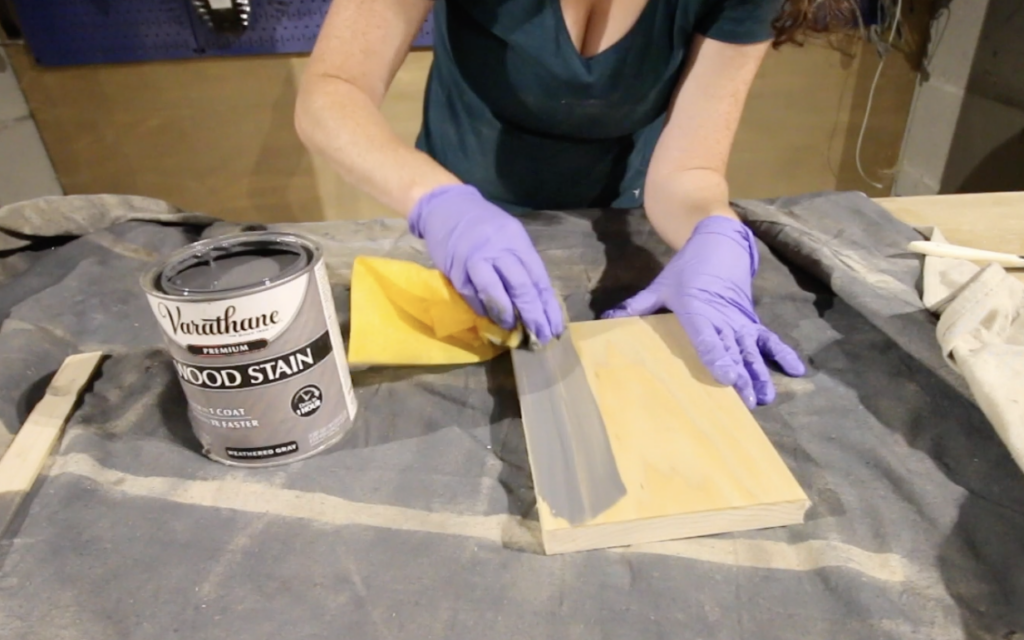
Wood staining essentials!
Looking for something?
We've been doing this since 2012 so we have a LOT of blog posts!
Search stuff like: Ceiling Projects | DIY Plant Stands | Thrift Flips


Hello, I'm Morgan, half of the creative force behind CharlestonCrafted.com! With a passion for DIY that dates back to 2012, I've transformed three homes and now I'm dedicated to helping others craft their dream spaces. Let's turn your house into a home together!


